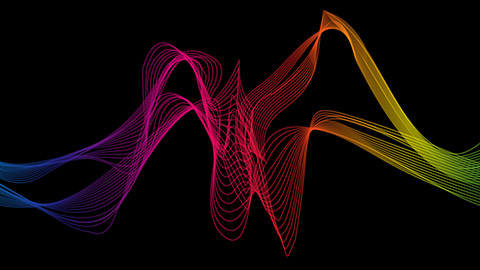A spectrum of sexual orientations

The term nonbinary isn’t just about gender. It’s also used to describe sexual orientations that don’t fit neatly into the categories of gay or straight.
Some of the research exploring non-binary sexual orientations is cutting-edge—and some has been around for a long time.
Back in the 1940s, sexologist Dr. Alfred Kinsey and his colleagues found that many people fall somewhere between exclusively heterosexual and exclusively homosexual in their attractions and/or behavior. In other words, Dr. Kinsey and his colleagues were beginning to explore the realm of bisexual attraction and behavior. As Dr. Kinsey himself famously put it:
“The living world is a continuum in each and every one of its aspects” (Kinsey Institute, 2017, “The Kinsey Scale”).
More recently, as the concept of gender has expanded to encompass nonbinary identities, our understanding of the spectrum of sexual orientations has become even more nuanced, with a variety of terms new to many of us. In addition to gay, straight, and bisexual there are many sexual orientations explored on this website. Here are a few of the terms you might encounter:
Asexual: A person who does not experience any form of sexual attraction towards others or does so only under limited circumstances. People who identify as asexual may or may not experience emotional, physical, or romantic attraction. Asexuality differs from celibacy in that it is a sexual orientation, not a choice.
Pansexual/Omninsexual: A person who has the potential to experience emotional, romantic, physical and/or spiritual attraction to persons regardless of gender identity or expression.
Pomosexual: A person who resists fitting into any sexual orientation label, such as gay or straight.
Queer: An umbrella term for anyone who does not identify as straight. Historically a negative term and insult, queer is being reclaimed by many LGBT+ people—particularly youth—as a source of pride and political identity. The term is valued by some for its defiance, by some because it can be inclusive of the entire community, and by others who find it to be an appropriate term to describe their more fluid identities. “Queer” is still disliked by some people in the LGBT+ community and its use by heterosexual people can be considered offensive. Due to its varying meanings, this word should only be used when self-identifying or quoting someone who self-identifies as queer (i.e. “My cousin identifies as queer.”)
Questioning: A person who is in a process of discovery and exploration about their sexual orientation, gender identity, gender expression, or a combination thereof.
Featured Content
Recently, a number of high-profile individuals have come out as pansexual. This engaging and informative article in Cosmopolitan magazine explores what it means to be pansexual.
References:
Pugachevsky, J. (2017, April 26). What does it mean to be pansexual? Cosmopolitan. http://www.cosmopolitan.com/sex-love/a9529384/pansexual-definition-meaning/
